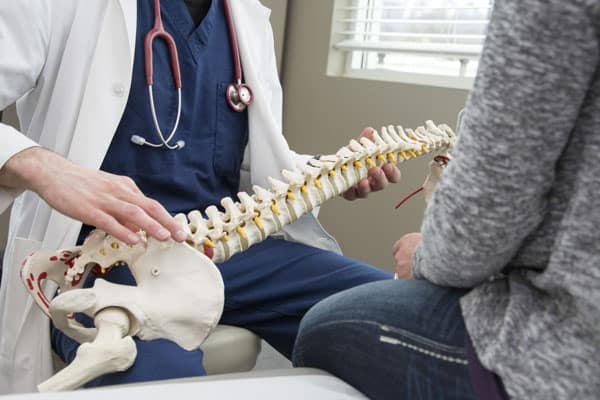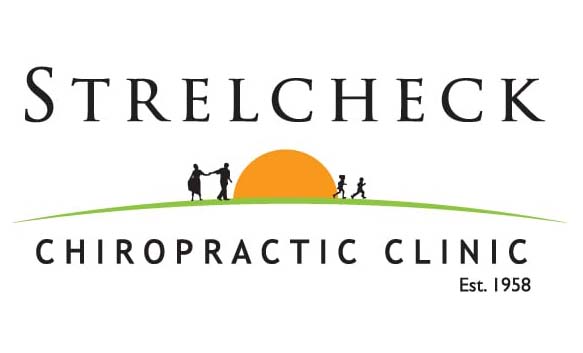Spondylolisthesis Treatment Crystal Lake
What is Spondylolisthesis?
Spondylolisthesis is a condition in which one of the bones of the spine (vertebrae) slips out of place onto the vertebra below it. If it slips too much, the bone might press on a nerve, causing pain. Usually, the bones of the lower back are affected. The word spondylolisthesis comes from the Greek words spondylos, which means “spine” or “vertebra,” and listhesis, which means “to slip or slide.”
Tired of living with painful spondylolisthesis? Start improving your health by contacting our Crystal Lake staff to begin your spondylolisthesis treatment today.
Signs & Symptoms
Many people with spondylolisthesis have no symptoms and don’t even know they have the condition. When symptoms do occur, low back pain is the most common. The pain usually spreads across the lower back, and might feel like a muscle strain.
Spondylolisthesis can also cause muscle spasms in the hamstring muscles in the back of the thighs. Tight hamstrings can cause the person to walk with short strides and with the knees slightly bent. If the slipped vertebra is pressing on a nerve, pain might spread down the leg to the foot. The foot might also tingle and/or feel numb.
Causes

The bones in your spine come together at several small joints that keep the bones lined up while still allowing them to move. Spondylolisthesis is caused by a problem with one or more of these small joints that allows one bone to move out of line.
Spondylolisthesis may be caused by any of a number of problems with the small joints in your back. You could have:
- A defective joint that you’ve had since birth (congenital).
- A joint damaged by an accident or other trauma.
- A vertebra with a stress fracture caused from overuse of the joint.
- A joint damaged by an infection or arthritis.
Spondylolisthesis affects children and teens involved in sports. Some sports, such as gymnastics or weight lifting, can overuse back bones to the point of causing stress fractures in vertebrae, which can result in spondylolisthesis.
Older adults can develop spondylolisthesis, because wear and tear on the back leads to stress fractures. It can also occur without stress fractures when the disc and joints are worn down and slip out of place.
Diagnosis & Treatment

Your chiropractor may use one of the various types of chiropractic adjustment -an active, hands-on technique that helps restore motion to the spin and improve joint motion. Spinal manipulation techniques your chiropractor may use include:
[box title=”Specific spinal manipulation”]Identifies the joints that are restricted or those that show abnormal motion. This gentle thrusting technique returns motion to the joint by stretching the soft tissue and stimulating the nervous system.[/box] [box title=”Flexion-distraction technique”]Is a gentle, non-thrusting type of manipulation usually used for degenerative disc conditions and facet strain that may be related to spondylolisthesis. This treatment is hands-on and uses a specialized table to assist the chiropractor, but instead of direct force, it’s a slow pumping action.[/box] [box title=”Instrument-assisted manipulation”]is another non-thrusting technique. With this technique, the chiropractor applies force using a hand-held instrument without thrusting into the spine—especially appropriate in older patients who have a degenerative joint condition.[/box] [box title=”Trigger point therapy”]helps the chiropractor identify specific hypertonic (tight), painful points on a muscle. He or she puts pressure (using his or her fingers) on these points to reduce the tension.[/box] [box title=”Manual joint stretching and resistance techniques”]such as muscle energy therapy, can be used.[/box] [box title=”Interferential electrical stimulation”]uses a low frequency electrical current to stimulate your muscles to decrease inflammation.[/box] [box title=”Ultrasound”]helps reduce muscle spasms, stiffness, and back pain by increasing circulation. It does this by sending sound waves deep into muscle tissues, creating a gentle heat.[/box]Therapeutic exercises are also an important part of chiropractic care for spondylolisthesis. Your chiropractor will prescribe specific exercises to help promote stability. Corrective spinal care and exercises can help minimize hyperlordosis and also help address inflammation and pain caused by spondylolisthesis.




